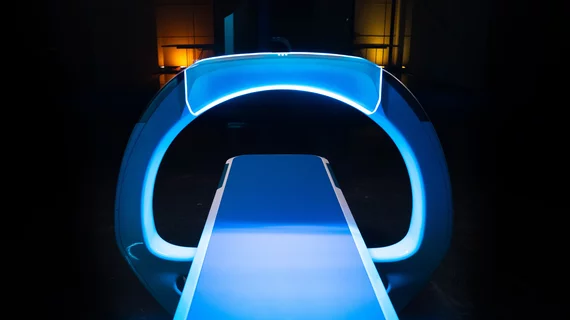Radiology disrupter Nanox collects $20M from South Korean telecom giant, eyeing 5G imaging
Imaging disrupter Nanox has scored $20 million in new investments from South Korean information and communications technology giant SK Telecom, the firm announced Thursday.
This is in addition to SK’s previous contribution of $5 million and balloons the Israeli radiology system-maker’s fundraising total to $80 million, with funds from Fujifilm and Foxconn. Nanox has developed a new digital x-ray device that carries a smaller footprint and cost when compared to traditional modalities, and is eyeing “mass deployment” of more than 15,000 of its systems across the globe.
The deal with SK Telecom will get the firm part of the way there, as Nanox is also agreeing to bring 2,500 of its systems to the country, along with opening a subsidiary in Korea. There, they’ll focus on ramping up production of its “x-ray source semiconductor” and tap the tech company for its expertise.
“We see Nanox as one of the most promising companies to make a real difference for early detection of disease and higher standard of care to the humankind,” Park Jung-ho, CEO of SK Telecom, said in a statement. “We feel the company is making significant progress towards its vision and want to help make it a reality.”
“Serial entrepreneur” and CEO Ran Poliakine founded the firm in 2012, signing a series of deals recently to distribute its scanners, mainly overseas. Nanox also recently partnered with Siemens-backed teleradiology firm USARad in February to distribute 3,000 of the machines, which have been compared to medical beds in Star Trek.
The Nanox System offers imaging services ranging from 2D x-ray to 3D tomosynthesis computed tomography and operates on a pay-per-scan model, according to the announcement. It’s also meant to handle all steps of the process including image storage and artificial intelligence.
Speaking during the Jefferies 2020 Virtual Global Healthcare Conference Thursday, Poliakine estimated that Nanox has already tallied about $400 million in presales for its systems. Working with SK Telecom will also allow the firm to harness 5G to transmit medical images to the cloud for interpretation by radiologists across the globe.
Their goal, he said, is to “democratize” imaging, with Nanox especially targeting areas and provider organizations that lack access to imaging systems and the rads to read them.
“We are going to places that are outside the hospitals. We are going to places that could not possibly afford or have the infrastructure to have a proper medical imaging machine,” he told attendees Thursday. “We’re going after urgent care centers, primary care physicians, outpatient imaging and even veterinary centers are part of our targets. This market is 100 times bigger than the core hospitals.”

